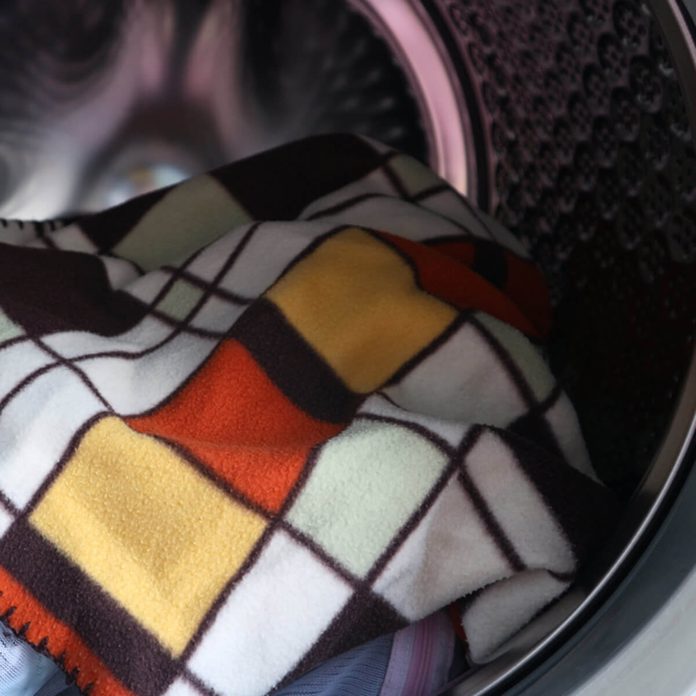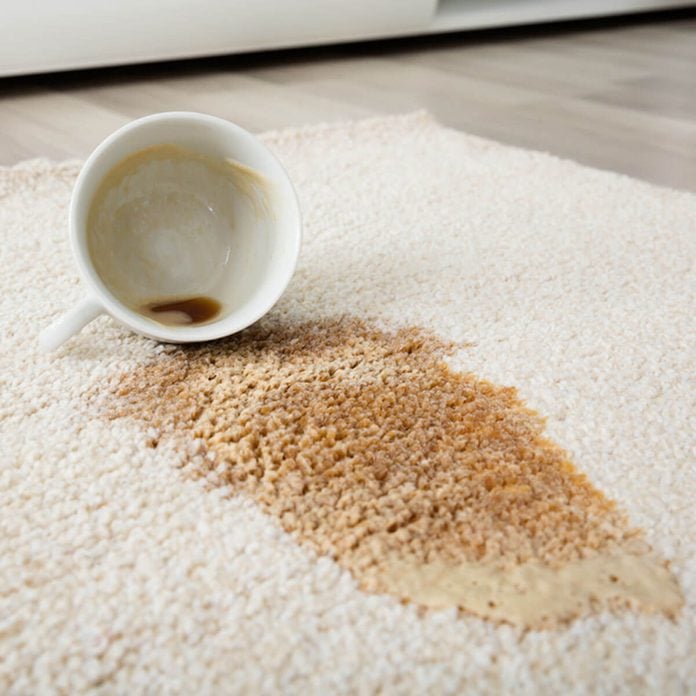When was the last time you washed your pillows or that that sleeping bag? There are some items you may not wash as regularly as your clothing, but there comes a time when everything needs a good washing. Here are 13 tips for cleaning those hard-to-wash items.
13 Laundry Tips for Hard-to-Wash Items

Curtains
It will depend on the material of your curtains, but many curtain fabrics are machine washable. Check the label and if it’s safe for the machine, run those curtains on a delicate cycle with cold water and your normal detergent. If the label says they are safe for the dryer, use the lowest setting possible and remove promptly to minimize wrinkles.

Bed Skirts and Canopies
If you suffer from allergies or have pets, consider washing those bed skirts and canopies every two to three months. Otherwise, twice a year should suffice. Check the fabric-care label directions first to make sure they are machine washable, and wash on a cold cycle to avoid damaging the fabric.
Believe it or not, your washer should be washed, too. Learn how to clean a front load washer.

Pillows
When washing pillows, wash two pillows at a time to keep the washing machine balanced. Pillows should be washed every three months with a mild detergent. The pillow’s care label should have instructions and tips for cleaning, including recommended water temperature.

Blankets and Mattress Covers
When washing blankets, first consider how much they are used. If the blanket is rarely used, wash it every three to four months. If it is used daily, consider washing it once every week or two. Your blankets should have a care label with washing instructions. Consider washing blankets separate from your clothing, as colors may bleed. Wash mattress covers once a month on the hottest setting possible. Here are a few tips for disinfecting your mattress. While you’re at it, also find out how to wash a weighted blanket.

Comforters and Duvet Covers
A duvet cover will collect most of the dirt and pet hair, so consider washing it weekly on the hottest setting it can tolerate. And make sure you know how to put your duvet cover on. As for your comforter, follow care label directions. If it is machine washable and free of stains and dirt, stick to a six-month wash schedule. If it is large, you may need to take it to a laundromat where there are large-capacity washers. Otherwise, take it to a dry cleaner.

Jackets
Unless jackets are soiled or have a stain, you should wash them at the beginning and end of the season according to the care label instructions. If the label is missing or torn, wash on cold. For winter jackets, it’s important to check the label as some materials don’t stand up to heat well and can be damaged in the dryer. Down-filled jackets may require a special soap or dry cleaning. Fasten all zippers and buttons and then turn the jacket inside out before washing. Wool jackets should be hand washed or dry-cleaned.
Also, learn how to wash a sweater.

Sneakers
If your running shoes are soiled, grab some baking soda and sprinkle 3 tablespoons in each shoe and leave it overnight. The next day, remove laces and wipe off as much dirt as possible. Put the shoes inside an old pillowcase or washing bag and set the washer to a delicate, cold cycle. Throw in a couple towels to help balance the load. When the sneakers are clean, let them air dry as the dryer may damage some of the shoe’s materials.

Sleeping Bags
Sleeping bags generally need just some spot cleaning, but if they need to be washed, check the label and follow instructions. Use a detergent that’s made for down and synthetic materials. You may need a high-capacity washer depending on the size of the bag. You can also have it professionally laundered. Sleeping bags take two to three hours to dry thoroughly.

Rugs
If you have a bathroom rug, it should be washed weekly to remove bacteria and odors and prevent mold and mildew. Before machine washing area rugs, check the label as some rugs may have a rubber backing or colors that can’t handle home washers. Pre-treat any stains and wash rugs in cold water with your regular detergent. Wash a couple small rugs together to keep the machine balanced. Use common sense when determining if a rug is too large to fit in and get cleaned in your home washing machine. or if you should go to a laundromat. Most rugs should be air dried as heat can cause them to shrink. When it comes to rugs labeled “dry clean only,” check with a professional.

Pet Beds
Wash any pet bedding separately from other loads such as clothes, your bedding and towels. If there’s a cover, remove it and wash the bedding on a cold cycle with a pet-safe detergent. Wash on hot—a temperature of at least 140 degrees F to kill germs. Dry the bedding at the highest temperature setting. As for a wash schedule, consider how often your pet uses the bed, how much they shed and if the bedding smells.

Faux Fur
When it comes to faux fur, a gentle cycle with a mild detergent works best. After the washing cycle, roll the garment and squeeze out any remaining water and hang to air dry. Once dry, if needed, use a wide-toothed comb to fluff the fur.

Stuffed Animals
Don’t wash stuffed toys that contain a music box, glued on items (such as eyes), those filled with foam balls or those that are extremely old. Other stuffed animals can be washed in a machine without an agitator. Place the animals in a pillow case or laundry bag and tie any strings that may become tangled before washing. Use a gentle cycle on cold or warm, never hot. Air dry to prevent damage.

Ski Boot Liners
Consider hand washing your boot liners as they are subject to shrinking in the washing machine and dryer. Soak the liners in a sink with cold water and a little detergent for 15 minutes. Rinse with cold water and hang to dry. Here is also how to unshrink clothes.




















